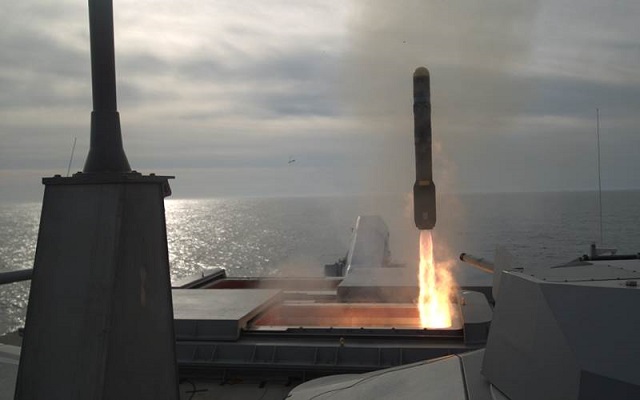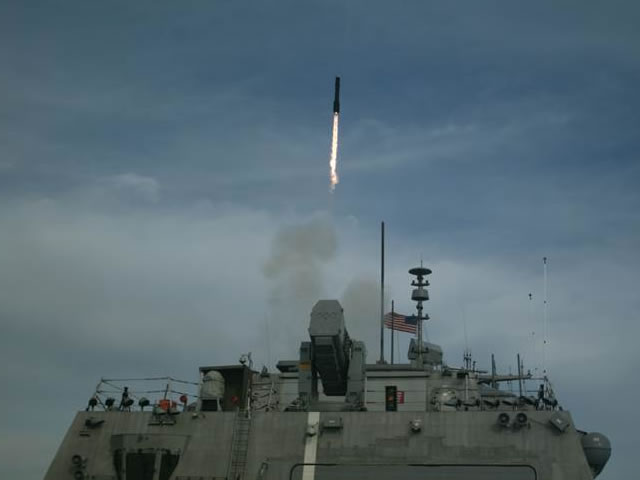Breaking news
Video: US Navy Conducts 1st Hellfire Surface to Surface Missile Test from Freedom-class LCS.
| 2017
|
|
|||
|
USS Detroit (LCS 7) Structural Test Firing of Surface to Surface Missile Module (US Navy Video)
|
|||
|
|
|||
| SSMM utilizes the Army Longbow Hellfire Missile in a vertical launch capability to counter small boat threats. SSMM is the next delivery of capability for the LCS SUW MP, which achieved initial operational capability (IOC) in November 2014 with delivery of the Gun Mission Module (two 30mm guns) and the Maritime Security Module (11m Rigid Hull Inflatable Boat for Visit Boarding Search and Seizure). "This was another positive step forward in fielding of the next increment for the SUW MP," stated Capt. Ted Zobel, Mission Modules program manager. "The SSMM is a critical piece of the SUW MP and this event will allow us to move safely into developmental testing and soon to fielding this capability aboard LCS." |
|||
|
|
|||
|
USS Detroit (LCS 7) Successful Missile Test Firing (US Navy Video)
|
|||
|
|
|||
| When new or different ordnance systems are first installed on board Navy warships, a Structural Test Fire (STF) is required to determine if shipboard structures, equipment, and systems can operate satisfactorily after weapon firing and if any personnel hazards, such as toxic gas intrusion or damaging noise levels, exist during weapon firing operations. Specifically, STF verifies that the ship’s structure and equipment as well as the interfaces between ordnance and the ship are capable of withstanding the vibration, shock, noise, gases and other blast derivatives from ordnance firing. STF results will be used to evaluate and document safety requirements. The Surface Warfare Mission Package will begin developmental testing aboard USS Milwaukee (LCS 5) later this year and will culminate in operational testing and IOC in 2018. |
|||
|
|
|||
 ATLANTIC OCEAN—The first of three Longbow Hellfire Missiles is fired from Littoral Combat Ship USS Detroit (LCS 7) as part of a ripple shot completed during structural test firing (STF) on Feb. 28, 2017, off the coast of Norfolk, Virginia. The STF is part of the developmental test program for the Surface to Surface Missile Module. (Photo by U.S. Navy) ATLANTIC OCEAN—The first of three Longbow Hellfire Missiles is fired from Littoral Combat Ship USS Detroit (LCS 7) as part of a ripple shot completed during structural test firing (STF) on Feb. 28, 2017, off the coast of Norfolk, Virginia. The STF is part of the developmental test program for the Surface to Surface Missile Module. (Photo by U.S. Navy) |
|||



























